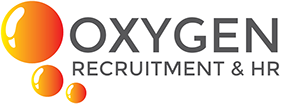Creating a Strategy for Re-engaging “Boomerang Employees”.
Creating a strategy for reengaging “boomerang employees” involves several key steps aimed at fostering positive relationships and maximising the potential of returning talent. Boomerang employees are individuals who leave an organisation but later return to work for the same employer. In Australia, several companies have successfully implemented strategies to reengage boomerang employees, contributing to their talent acquisition efforts. In a talent short market, this could prove to be another key part of your employment strategy. Here’s how you can create such a strategy, along with examples of Australian companies that have excelled in this regard:

Identify and Understand Boomerang Potential: HR teams can work to identify former employees who left on good terms and possess valuable skills or experience that align with current organisational needs. Understanding the reasons for their departure and their career progression since leaving can provide insights into their potential value as boomerang employees.
Example: At Atlassian (leading software company), HR actively tracks the career progression of former employees who left on good terms. They maintain open communication channels with alumni and leverage this network when relevant opportunities arise.
Maintain Positive Alumni Relations: Cultivating a strong alumni network is essential for reengaging boomerang employees. Regular communication, networking events, and alumni programs can help keep former employees connected to the organisation even after they’ve moved on.
Example: PricewaterhouseCoopers (PwC) Australia has a dedicated alumni program that provides networking opportunities, professional development resources, and exclusive events for former employees. This proactive approach strengthens relationships with alumni and increases the likelihood of boomerang hires.
Tailor Reengagement Offers: When reaching out to potential boomerang employees, you should personalise the approach based on the individual’s career goals, aspirations, and reasons for leaving. Tailoring reengagement offers demonstrates genuine interest and increases the likelihood of a successful return.
Example: Commonwealth Bank of Australia (CBA) offers personalised return-to-work programs for boomerang employees, which may include flexible work arrangements, mentorship opportunities, and tailored training programs. This customised approach acknowledges the unique needs and motivations of returning talent.
Leverage Referral Programs: Existing employees can be valuable sources of information about former colleagues who may be interested in returning. Implementing referral programs that incentivise employees to refer boomerang candidates can amplify recruitment efforts and strengthen the organisation’s talent pool.
Example: At Telstra, employees are encouraged to refer former colleagues who have left the company but may be interested in returning. Telstra offers referral bonuses and rewards to employees whose referrals result in successful rehires.

Provide Opportunities for Growth and Development: Boomerang employees are often seeking new challenges and opportunities for career advancement. Offering meaningful roles, challenging projects, and opportunities for skill development can entice former employees to return to the organisation.
Example: Seek, Australia’s leading job search platform, actively promotes career progression and internal mobility opportunities for boomerang employees. Seek provides returning talent with access to a wide range of learning and development resources, mentorship programs, and career advancement opportunities.
By implementing a strategic approach to reengaging boomerang employees, organisations can tap into a valuable talent pool, strengthen their workforce, and enhance their talent acquisition efforts. Whilst many of the organisations listed are large employers, there is plenty of scope for smaller organisations to implement some of the ideas listed above, but honed to a scale that suits your business.
